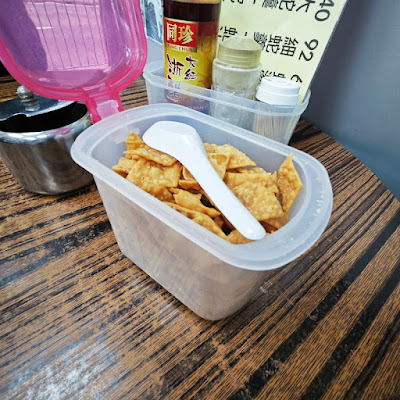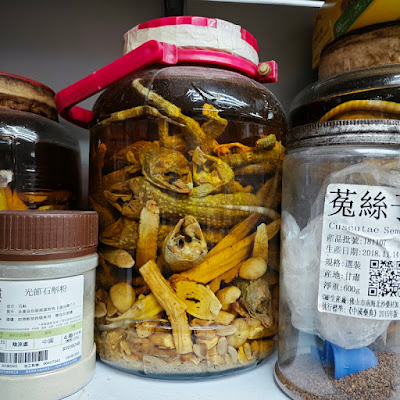07-020
Jewish bookshop
Like many
museums, the Jewish Museum of Munich has a souvenir shop located right at the
entrance. Sometimes, the souvenir shop is the only area in a museum that can
make money. It is also a place where visitors can get in touch with some
“eccentric” knowledge that cannot be displayed in the proper exhibits.
 Literatur Handlung, the Jewish bookstore
Literatur Handlung, the Jewish bookstoreThe souvenir
shop inside the Jewish Museum of Munich is not very large, but the items inside
are interesting. Let me show you around.
Books and Toys
The souvenir
shop sells many books. The museum calls it a bookshop rather than a souvenir
shop. However, most of the publications sold there are in German.
 Books selling in Literatur Handlung are mainly German
Books selling in Literatur Handlung are mainly GermanThere is an
interesting section that sells Jewish toys. Many Christian families bring their
kids to children’s church from a young age, hoping their kids can grow up in a
Christian environment. The same applies to Jewish parents. In the toy section,
you can find a Chanukah sticker book, a Chanukah jigsaw puzzle, a Chanukah
memory game, a sing-along dreidel, magnetic Hebrew alphabet letters, a plastic Passover seder food set, and more.
Toys in Chanukah theme
More toys in Jewish theme
 Plastic Passover seder food set and plastic shofar
Plastic Passover seder food set and plastic shofarJudaica
The most
attractive part of the souvenir shop is the Judaica section, or Jewish
ceremonial art. Judaica are beautifully made, but most of them are sold at an
expensive price. For example, a metal Hanukkah menorah is sold for EUR 99. A
ram horn shofar made by the famous Bar-Sheshet and Ribak families is sold for
EUR 69.
 Hanukkah menorah, Shofar, and others
Hanukkah menorah, Shofar, and others Torah pointers, Passover Seder plate, and others
Torah pointers, Passover Seder plate, and othersMore expensive Judaica were displayed on the window
Prices were not shown. You need ask.
Some items can
be easily identified. For example, the menorah and shofar mentioned above, or
the Torah pointers and Passover Seder plate in the photo below. But for some of
the items, I have no idea what they are. Since the items sold in the souvenir
shop are not part of the exhibit, the shop won’t tell you what they are
selling. You can ask, though. But I prefer to do my own research to find out.
I am going to
share with you what I have found out. To my surprise, some of the items are not
even Biblical!
Mezuzah
I know what a
mezuzah is. I visited Jerusalem in 2008. On the trip, I saw many Jewish people
touching a mezuzah and kissing their fingers. I asked a lady the purpose of
doing this. Maybe she could not speak much English; she just told me “Lucky!
Lucky!”.
 Mezuzah
MezuzahA mezuzah is a
piece of parchment inscribed with specific Hebrew verses from the Torah, which
Jewish followers of Rabbinical Judaism affix to the doorposts of their homes.
It is based on the Hebrew Bible Deuteronomy:
Hear, O Israel:
The Lord our God, the Lord is one. Love the Lord your God with all your heart
and with all your soul and with all your strength. These commandments that I
give you today are to be on your hearts. Impress them on your children. Talk
about them when you sit at home and when you walk along the road, when you lie
down and when you get up. Tie them as symbols on your hands and bind them on
your foreheads. Write them on the doorframes of your houses and on your gates. (Deuteronomy 6:4-9, NIV)
However, are
the Bible verses really asking people to nail a mezuzah on every doorpost? I
seriously doubt that. My conviction is that these verses should be interpreted
allegorically, not literally. God is asking His followers to follow His words
not only in our home, but always. He asks us to remember His Bible verses while
leaving our home, while greeting other people outside, and while travelling.
Most mezuzot are made of metal or wood. The parchment stored inside the mezuzah
is not visible from outside.
The Bible is
supposed to be read, not to be adored. I know a brother in church who really
writes down Bible verses and sticks them on his main door to remind himself to
remain righteous whenever leaving his home. This is what the Bible teaches.
Putting a parchment inside a box and hanging it on the doorpost simply misses
the point. And kissing a mezuzah won’t bring you any luck.
Hamsa
Not to be
confused with Hamas, whom the Israelis hate most, the hamsa is a palm-shaped
amulet popular throughout North Africa and in the Middle East and commonly used
in jewelry and wall hangings.
Scholars
suggest that the hamsa may have originated from ancient Mesopotamia, the
birthplace of Abraham, the patriarch of Judaism, Christianity, and Islam. The
hamsa may be a symbol of the goddess Tanit, who was worshipped by the
Phoenicians and the Carthaginians. Tanit was associated with the moon,
fertility, and protection, and may have influenced the later conception of the
hamsa as a sign of divine guidance and luck. The biblical connection of the
hamsa is more or less close to zero. Jews attribute it to the hand of Miriam,
the sister of Moses and Aaron, who was a prophetess and a leader of the
Israelites during the Exodus. Miriam is revered in Judaism for her role in
saving Moses from the Nile, singing a song of praise after crossing the Red
Sea, and providing water for the people in the desert. Miriam’s hand may
symbolize her courage, faith, and wisdom, as well as her protection from the
evil eye.
 Hamsa and Naẓar
Hamsa and NaẓarChristians
interpret the hamsa as the hand of Holy Mary. Muslims interpret the hamsa as
the hand of Fatima, the daughter of Muhammad, the founder of Islam. However,
the hamsa does not appear anywhere in the Bible or in the Quran. Remember, God
called Moses to leave Mesopotamia to worship Him alone. If the hamsa is related
to Mesopotamian pagan worship, it is a big no-no to embrace it into the
religion of God.
It is difficult
to pinpoint the exact time when hamsas emerged in Jewish culture, though it is
clearly a symbol of Sephardic nature nowadays. You can find hamsas in the form
of a ceramic table decoration, a bookmark, or a keychain. The price of a hamsa
ranges from a few Euros to around fifty, depending on the quality.
Naẓar
Naẓar
or eye bead is an eye-shaped amulet believed by many to protect against the
evil eye. The bead is made of a mixture of molten glass, iron, copper, water,
and salt, ingredients that are thought to shield people from evil.
The belief in
the evil eye among humans has existed since prehistory, and amulets to protect
against it have been found dating back to about 5,000 years ago.
The naẓar
is found in many cultures in the Mediterranean region, the Balkans, the Middle
East, Central Asia and South Asia. It has become an item of popular culture in
modern Turkey. A friend of mine visited Turkey many years ago. He bought me an
eye bead as a souvenir. Thinking of its relationship with pagan worship, I
threw the eye bead away. I was surprised to see that the naẓar
has also become a part of Jewish culture.
These items are
adorable, but I did not buy any. Price is one reason. Also, I am not a Jew.
Bringing them back home would only add more dust collectors to my small house.
I already have plenty of dust collectors at home.
 Items on the upper shelf are expensive.
Items on the upper shelf are expensive.
But items underneath are selling at a much cheaper price.However, not
all Judaica found in the shop are expensive. There is a section near the
cashier that sells Judaica, along with other Jewish accessories, at a more
reasonable price.
 Kippah and other Jewish accessories
Kippah and other Jewish accessoriesDreidel
A four-sided
spinning top, played during the Jewish holiday of Hanukkah, the dreidel is a
Jewish variant of the teetotum, a gambling toy found in Europe and Latin
America. The dreidel is a dice game, and technically, a gambling game, although
people also play the game with chocolate instead of money.
 Dreidel
DreidelEach side of
the dreidel bears a letter of the Hebrew alphabet: נ (nun), ג (gimel), ה (hei), ש (shin).
According to a tradition first documented in 1890, the game was developed by
Jews who illegally studied the Torah in seclusion as they hid, sometimes in
caves, from the Seleucids under Antiochus IV.
Some rabbis
ascribe symbolic significance to the markings on the dreidel. A gematria
reading yields the number 358, identical to the value of the four letters used
to spell “Moshiach” (Messiah).
I have thought
about buying a dreidel for a long time. They are widely available on Amazon. It
is a Jewish game, but most dreidels are made in China. It seems there is no
reason to purchase an Israeli game from America when the item itself is made
just a hundred miles away from my hometown. I was in a Jewish museum and now I
had a reason to buy one.
I will write a
post about the dreidel when I have time.
Red thread
To be honest, I
did not know what it was in the first place. I had not heard of Kabbalah or red
thread or string until I found out about it from the internet.
 Red Thread
Red ThreadRed string is a
type of talisman that some people wear as a bracelet or band on the wrist. It
is believed to have various meanings and purposes, such as protection, faith,
good luck, strength, and connection. Red string is often associated with
Kabbalah, a mystical form of Judaism, but it can also be found in other
cultures and traditions.
There is only
one place in the Bible that mentions red string. It is in Genesis:
When the time
came for her to give birth, there were twin boys in her womb. As she was giving
birth, one of them put out his hand; so the midwife took a scarlet thread and
tied it on his wrist and said, “This one came out first.” But when he drew back
his hand, his brother came out, and she said, “So this is how you have broken
out!” And he was named Perez. Then his brother, who had the scarlet thread on
his wrist, came out. And he was named Zerah. (Genesis 38:27-30)
However, the
Bible only mentioned the use of red thread to identify the twins. It did not
mention that wearing a red thread would bring good omen. Anyway, wearing red
thread has become a popular culture, even outside Israel.
 The certificate of the red threads
The certificate of the red threadsThe certificate is about the size of a prayer card.
Bible verse Numbers 6:24 יְבָרֶכְךָ֥ יְהוָ֖ה וְיִשְׁמְרֶֽךָ is quoted on the other side.
I bought a pack
of 5 red threads. And it came with a certificate. The threads are blessed by, I
don’t know who.
In addition, I
also bought a prayer card. I have written 2 posts about prayer cards, one for
ordinary prayer cards and the other for third class relics prayer cards. I am
happy to acquire a Jewish prayer card in my collection.
 Jewish prayer card, in Hebrews
Jewish prayer card, in Hebrews
 The other side is the English translation.
The other side is the English translation.
The card is Traveler's Prayer.That is all I
want to share in this post. I found that I learned a lot from that visit.














































